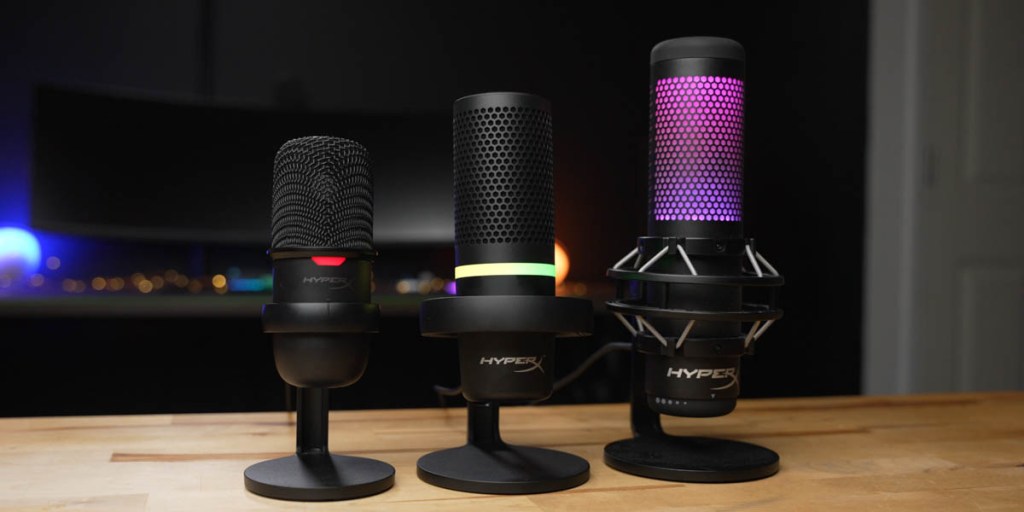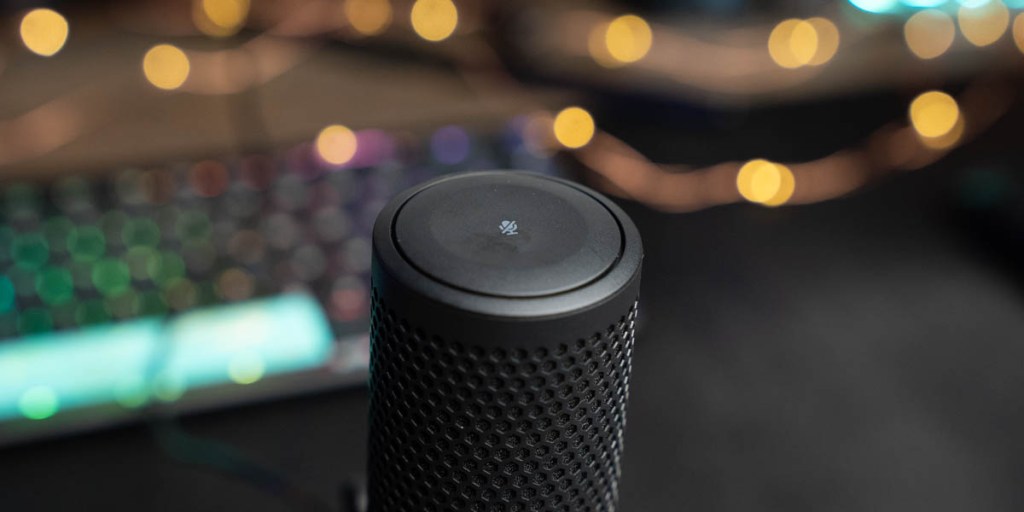
Things have been a little quiet from HyperX on the microphone font lately, but today it’s announcing the brand new DuoCast. Bridging the gap between the entry-level SoloCast and the more expensive QuadCast S, the DuoCast features a sleek built-in shock mount, RGB light ring, and dual selectable polar patterns. Be sure to hit the video below for a detailed look and how it sounds and what it offers for the $99 price point.
If you’ve read any of my streamer microphone reviews in the past, you probably know that I’m a big fan of the HyperX SoloCast. It’s what I use to record a majority of my reviews. The affordable price point, small size, simple features, and sound quality cover most of what I look for in a microphone.
That being said, it does have some shortcomings when it comes to sound isolation out of the box. So when HyperX reached out about the embargo of a new microphone, the DuolCast, I was immediately intrigued.
HyperX is also announcing new colorways for the SoloCast and QuadCast S today. Both of those microphones will now be available in white as well.

HyperX DuoCast: Design
While the SoloCast has more of a rounded and slightly egg-inspired capsule design, the DuoCast looks like a scaled-down version of the QuadCast. The low-profile shock mount takes up much less visual space but still has the familiar tap-to-mute capacitive button on top, a multifunction dial on the back, a headphone out port, and a USB-C port for connecting to a computer.
The included stand is very reminiscent of the QuadCast. It doesn’t hold the microphone very high but it is easily removable to mount onto a boom arm, which I would highly recommend. There are very cheap mic arms on Amazon, and in my opinion, they are absolutely worth adding to your audio setup.
HyperX DuoCast: Video
RGB light ring
One of the standout features of the QuadCast S is the RGB lighting that illuminates the perforated pop-filter. The DuoCast also features RGB lighting, but it’s a bit more subtle with the LED ring just above the shock mount. The Colors are customizable from within the HyperX INGenuity app.
HyperX DuoCast: Setup
Getting up and running with the DuoCast is easy – just plug it in and it’s ready to go. One big difference over the SoloCast, though, is that it does have dual selectable polar patterns – Cardioid and Omnidirectional. While there isn’t a physical switch on the back like the QuadCast S to indicate which pattern is active, holding in the gain dial on the back of the mic will make this adjustment.

If the RGB ring goes from full color to focus on the front, it’s in Cardioid mode. If the ring changes from a small light in front to the full ring being illuminated, it’s in omnidirectional mode.
If you need more pickup patterns, check out the QuaCast S which features Cardioid, Omni, Bi-directional, and stereo.
Unlike the SoloCast, the DuoCast also has adjustable gain by adjusting the dial in the back of the microphone.

How does it sound?
A USB microphone, the DuoCast supports hi-res 24-bit/96kHz audio recording. And in my testing, it sounds great. To me, it sounds like the high end has been pulled back a bit from the sound of the SoloCast. It’s a little smoother on sibilance in my voice. Because of that, it also sounds like some mids have been brought forward, but that could just be from the slightly lessened sibilant high end.
In my experience, the shock mount does a great job of knocking down desk impacts. That is one of my biggest complaints about the SoloCast and HyperX addressed the problem directly with the DuoCast. Be sure to hit the video to hear comparisons between a few different microphones.

Versus the Deity VO-7U
Besides the SoloCast, one comparison I wanted to make was with the Deity VO-7U, which is a dynamic USB microphone rather than the more common condenser capsule design of the DuoCast, SoloCast, and QuadCast S.
Dynamic microphones are designed to be used much closer to the mouth for vocals. Like a Shure SM58, which rules live performances, or the SM7B, which is kind of the gold standard for podcasting, these mics have a different sound and use to them.
To me, the Deity VO-7U offers a fuller body but lacks some of the clarity of the HyperX condenser microphones. Be sure to hit the video to hear some examples.
If you’re looking for more comparisons, check out the review of the SoloCast to see how it stacks up.

It could still use a Boom Arm
As I briefly mentioned in the design section, to me, adding a cheap boom arm is nearly essential for any streaming microphone. They help to get the mic in a better placement for picking up vocals as well as removing impact noises from the desk. While the DuoCast might not need help for desk impacts, being able to perfectly place the mic is worth it in my opinion.
gadgetnewsonline’ Take
HyperX has another great-sounding USB condenser mic with the DuoCast that sits perfectly between the SoloCast and QuadCast S. Now, it’s easier to pick a mic that best fits specific needs.
Personally, the SoloCast fits most of what I need with the addition of a cheap boom arm and universal shock. Check out how I added those to the SoloCast here.
But, if you don’t want to have to add any additional components or if you want the ability to switch to an omnidirectional pickup pattern, the DuoCast is going to sound great for those scenarios.
Buy HyperX DuoCast
FTC: We use income earning auto affiliate links. More.




Comments